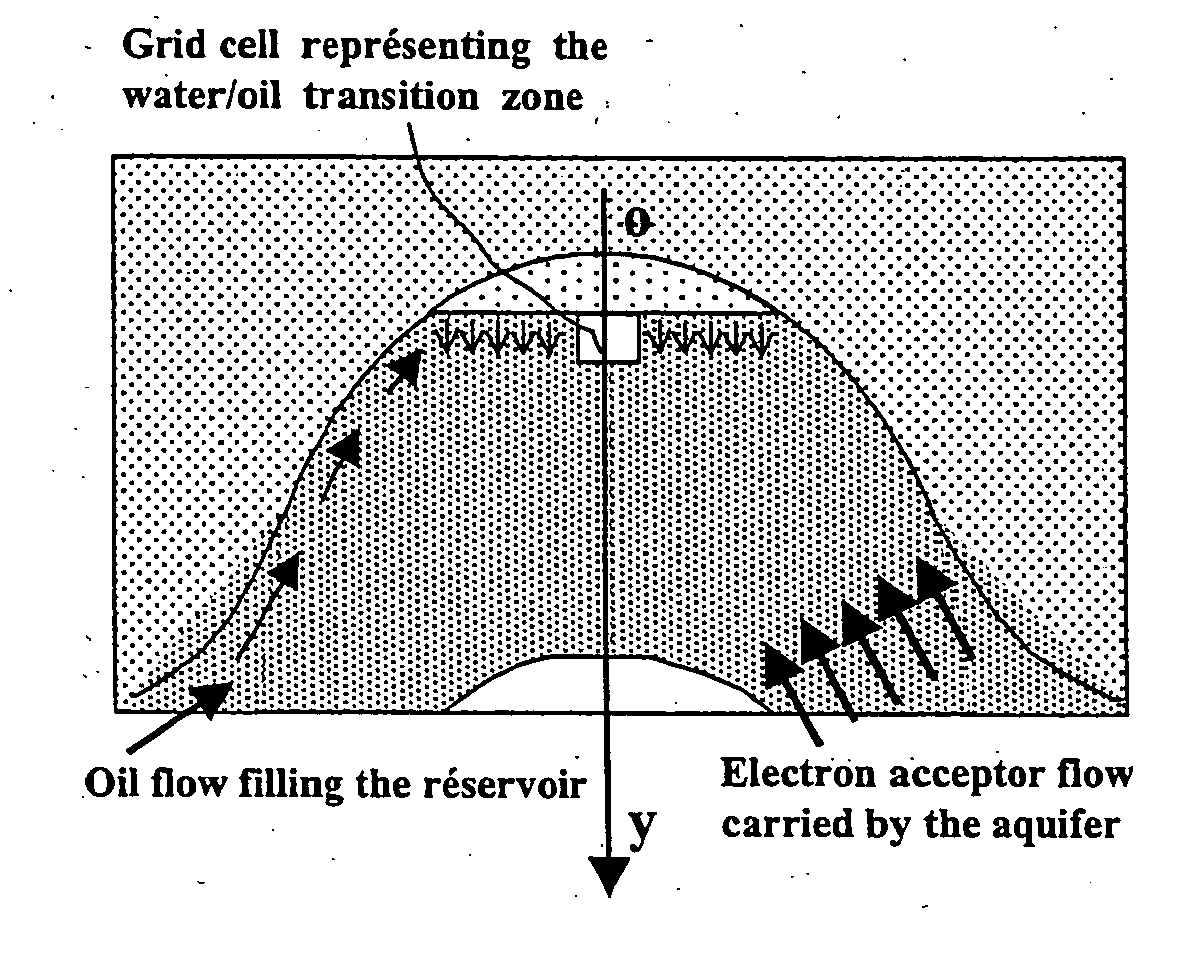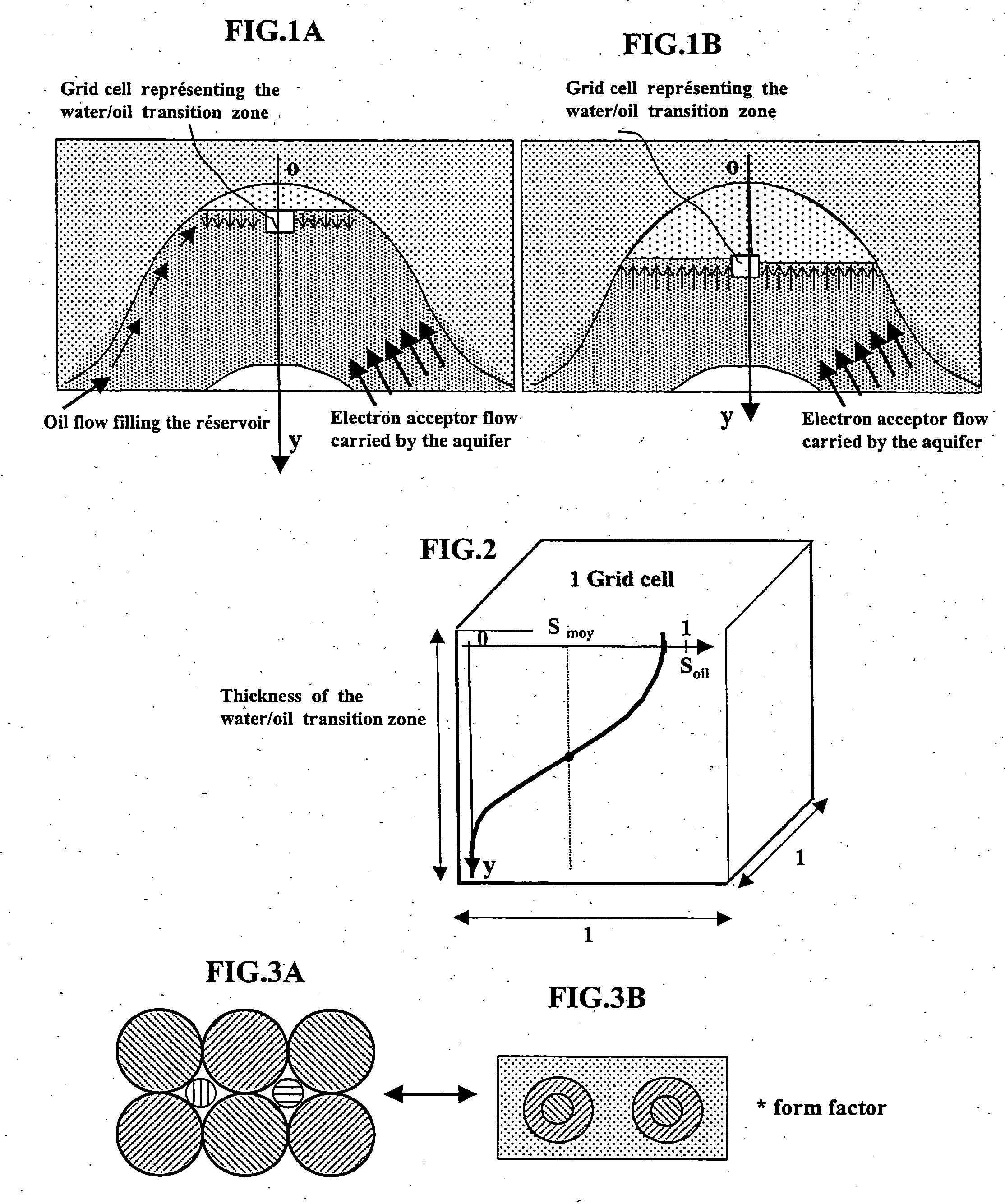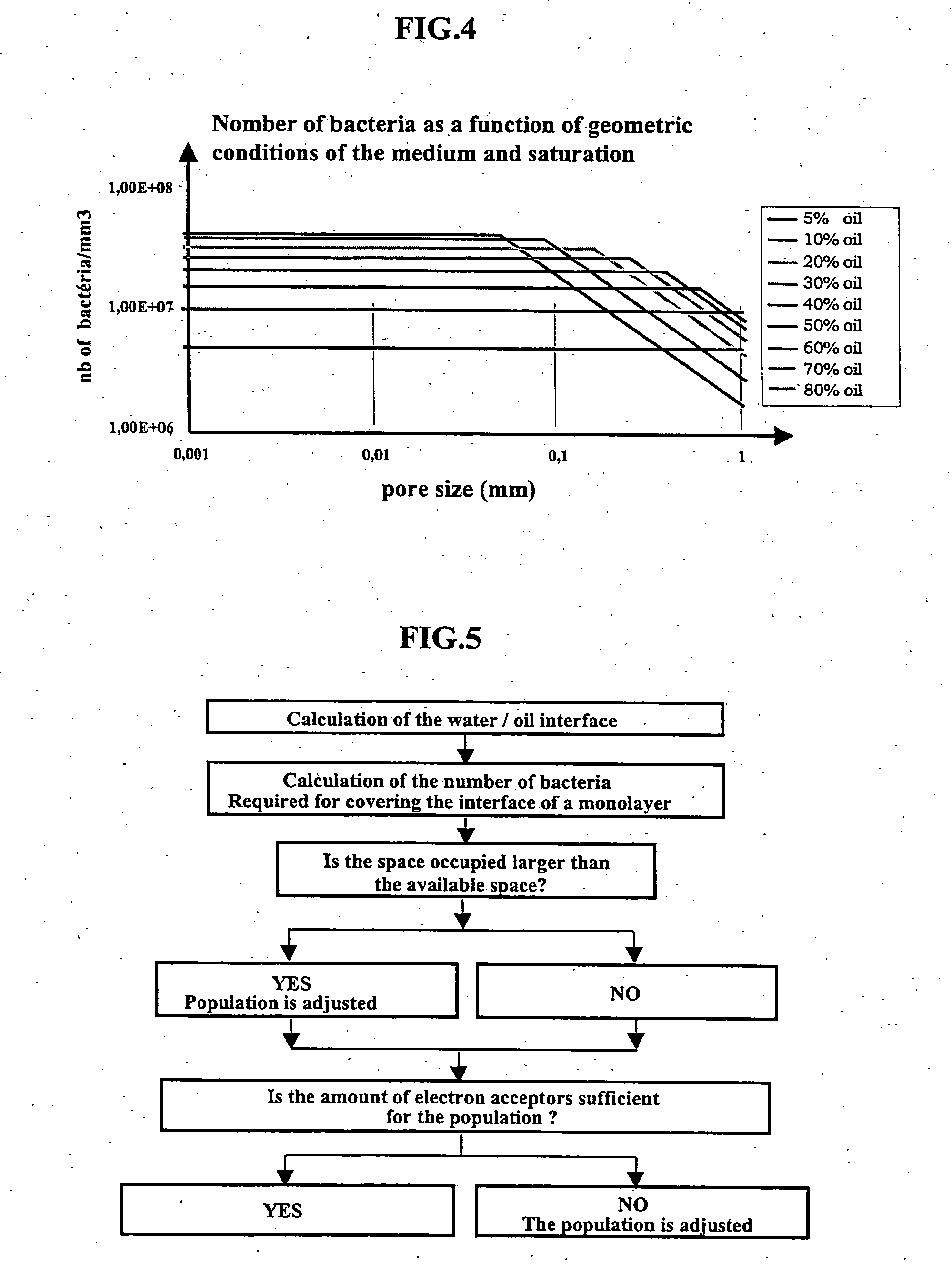Method for modelling hydrocarbon degradation in an oil deposit
a hydrocarbon degradation and oil deposit technology, applied in the direction of sealing/packing, instruments, borehole/well accessories, etc., can solve the problems of difficult production, not very cost-effective commercially, and two mechanisms are not independent, and the results obtained by this type of model are not really realisti
- Summary
- Abstract
- Description
- Claims
- Application Information
AI Technical Summary
Benefits of technology
Problems solved by technology
Method used
Image
Examples
Embodiment Construction
The model takes account of an oil composition comprising eight compound classes. Each compound class is associated with a stoichiometric balance and a preference factor; simulation thus allows to follow the evolution of the oil composition.
It uses a biodegradation kinetics involving bacteria attack mechanisms in the porous medium.
1.1.1 The Model
The tool for implementing the model is for example a known software platform called FLUID FOLDER, suited for fast simulation of traps, fluids and alteration phenomena: mixing, leaching, phase change, thermal cracking, etc.
In this model, we consider a trap (porous zone with a curved geometry allowing oil accumulation) that is discretized by means of a grid pattern. The fluid is biodegraded in a grid cell located near to the water / oil transition zone of the reservoir (FIGS. 1a, 1b). Each grid cell is a parallelepiped whose base has a 1-unit surface area and whose height is the thickness of the water / oil transition zone accessible by th...
PUM
| Property | Measurement | Unit |
|---|---|---|
| thickness | aaaaa | aaaaa |
| temperature | aaaaa | aaaaa |
| time | aaaaa | aaaaa |
Abstract
Description
Claims
Application Information
 Login to View More
Login to View More - R&D
- Intellectual Property
- Life Sciences
- Materials
- Tech Scout
- Unparalleled Data Quality
- Higher Quality Content
- 60% Fewer Hallucinations
Browse by: Latest US Patents, China's latest patents, Technical Efficacy Thesaurus, Application Domain, Technology Topic, Popular Technical Reports.
© 2025 PatSnap. All rights reserved.Legal|Privacy policy|Modern Slavery Act Transparency Statement|Sitemap|About US| Contact US: help@patsnap.com



